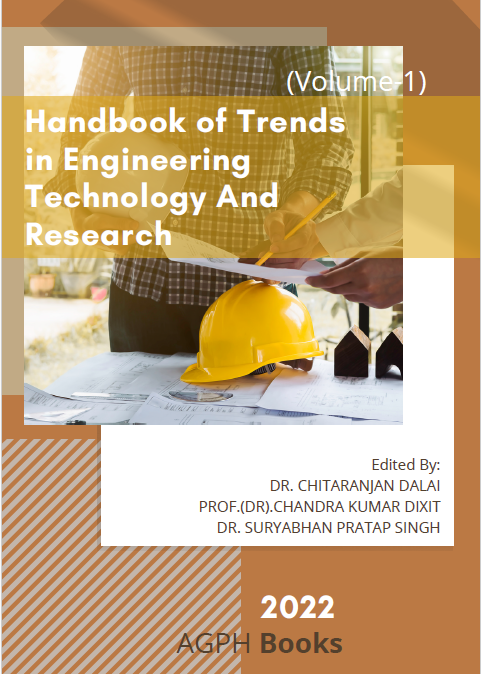A Comprehensive Review on The General Concepts and Applications of Artificial Intelligence
Keywords:
Artificial Intelligence (AI), Machine Learning techniques, Deep LearningAbstract
An artificial intelligence (AI) is a computer programme that mimics human behaviour or thinking and may be taught to tackle certain issues. Deep Learning as well as Machine Learning are used to create artificial intelligence (AI). To be able to make intelligent judgments, AI models must be educated utilising a lot of data. Artificial Intelligence (AI) is becoming more and more popular as a tool and as a concept. Computer programmes with artificial intelligence (AI) may reason and adapt based on their interactions with the world around them. The use of artificial intelligence (AI) in business has grown dramatically in recent years which has found its way into practically every industry. This paper presents some of the fundamental concepts in AI and also reviews the most popular real-world AI applications.
References
[1] Brouwer, C. L., Dinkla, A. M., Vandewinckele, L., Crijns, W., Claessens, M., Verellen, D., & van Elmpt, W. (2020). Machine learning applications in radiation oncology: Current use and needs to support clinical implementation. Physics and Imaging in Radiation Oncology, 16(July), 144-148. https://doi.org/10.1016/j.phro.2020.11.002
[2] Fazal, M. I., Patel, M. E., Tye, J., & Gupta, Y. (2018). The past, present and future role of artificial intelligence in imaging. European Journal of Radiology, 105, 246-250. https://doi.org/10.1016/j.ejrad.2018.06.020
[3] Floridi, L. (2021). What the Near Future of Artificial Intelligence Could Be. Philosophical Studies Series, 144, 379-394. https://doi.org/10.1007/978-3-030-81907-1_22
[4] Lalmuanawma, S., Hussain, J., & Chhakchhuak, L. (2020). Applications of machine learning and artificial intelligence for Covid-19 (SARS-CoV-2) pandemic: A review. Chaos, Solitons and Fractals, 139, 110059. https://doi.org/10.1016/j.chaos.2020.110059
[5] Lopez-Jimenez, F., Attia, Z., Arruda-Olson, A. M., Carter, R., Chareonthaitawee, P., Jouni, H., Kapa, S., Lerman, A., Luong, C., Medina-Inojosa, J. R., Noseworthy, P. A., Pellikka, P. A., Redfield, M. M., Roger, V. L., Sandhu, G. S., Senecal, C., & Friedman, P. A. (2020). Artificial Intelligence in Cardiology: Present and https://doi.org/10.1016/j.mayocp.2020.01.038
[6] Mak, K. K., & Pichika, M. R. (2019). Artificial intelligence in drug development: present status and future prospects. Drug Discovery Today, 24(3), 773-780. https://doi.org/10.1016/j.drudis.2018.11.014
[7] Meshram, V., Patil, K., Meshram, V., Hanchate, D., & Ramkteke, S. D. (2021). Machine learning in agriculture domain: A state-of-art survey. Artificial Intelligence in the Life Sciences, 1(September), 100010. https://doi.org/10.1016/j.ailsci.2021.100010
[8] Noorbakhsh-Sabet, N., Zand, R., Zhang, Y., & Abedi, V. (2019). Artificial Intelligence Transforms the Future of Health Care. American Journal of Medicine, 132(7), 795-801. https://doi.org/10.1016/j.amjmed.2019.01.017
[9] Suo, J., Zhang, W., Gong, J., Yuan, X., Brady, D. J., & Dai, Q. (2021). Computational Imaging and Artificial Intelligence: The Next Revolution of Mobile Vision. 1-23. http://arxiv.org/abs/2109.08880
[10] Wen-Xiang, D., Jian-Ping, Z., Jing, L., Zhi-Ying, Y., Hua-Ying, W., Zhong- Hua, Y., Yi-Ge, Z., Wen-An, Z., & Hui-Yong, H. (2019). Research on Text Mining of Syndrome Element Syndrome Differentiation by Natural Language Processing. Digital Chinese Medicine, 2(2), 61-71. https://doi.org/10.1016/j.dcmed.2019.09.001




